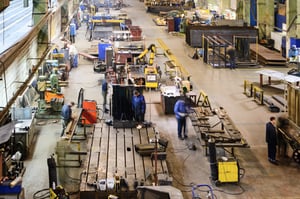 As a manufacturer, you work hard for your money, and you want to maintain as much of it as possible. So, when tax season rolls around, you’ll take advantage of any incentives you can — assuming they’re worth the effort.
As a manufacturer, you work hard for your money, and you want to maintain as much of it as possible. So, when tax season rolls around, you’ll take advantage of any incentives you can — assuming they’re worth the effort.
One tax incentive that may be worth investigating is the Research and Development (R&D) Tax Credit. It may not sound like R&D applies to manufacturing, but that’s far from reality. In fact, many manufacturers qualify for the credit, which could easily save you tens of thousands of dollars, if not more. Here’s what you need to know.
What is the Research and Development Tax Credit?
The R&D Tax Credit is often overlooked and underutilized within the manufacturing industry, especially among contract manufacturers. It’s a dollar-for-dollar reduction of a company’s, or its shareholders’, tax liability that incentivizes and encourages innovation and investment, so U.S. companies can compete more effectively on a global basis.
"I am amazed how many manufacturers do not realize or understand the IRS's definition of R&D Tax Credits,” says Benjamin Rashleger, retired president of WSI Industries in Monticello, Minnesota. “If you make or improve a product or a process, either for yourself or your customer, you have activities that qualify for the R&D Tax Credit. This credit can substantially reduce your Federal and State tax liability."
The best part? By reinvesting the R&D Tax Credit savings back into the business, some or all of your funding challenges may be solved. And there's no catch!
How Do Manufacturing Activities Qualify for R&D?
We understand that many contract manufacturers are making parts for other companies versus creating their own product line, but that doesn’t mean they don’t qualify for R&D. In fact, this misconception is causing many companies to leave money on the table.
Companies that have taken advantage of the R&D Tax Credit in the past have seen immediate and substantial money. At minimum, these companies have saved tens of thousands of dollars annually through R&D. Occasionally, businesses have seen as much as $100,000, $1 million, or more. If that’s not worth the effort, we don’t know what is.
Check out the video below as Kevin explains how the R&D Tax Credit helped his business become more competitive, grow faster, and increase profitability.
“I completed an assessment of my R&D Tax Credit with Black Line Group and concluded one thing – what’s the catch? I must be missing something. This is too good to be true,” says Dan Degre, owner and president of MISCO Speakers in Minneapolis. “What I found out is that I wasn’t missing anything. There was no catch!”
Kevin, owner of a Minnesota-based custom manufacturing company, could hardly contain his excitement when her learned how much he’d be receiving from the R&D Tax Credit. “If I described my feelings in one phrase it would be “tickled pink,” he says. “This new-found R&D tax credit revenue allowed me to invest in the business with the purchase of an Amada Servo Electric Turret Press, and I still had more left over.”
What Activities Qualify for the Tax Credit?
Now that you know what the R&D Tax Credit is and that it’s worth the effort to apply, you’re probably wondering what activities qualify for it. Qualifying R&D activities start with the sales process, when you discover requirements and specifications, and continue throughout the manufacturing process, concluding when quality sign-off is secured and production runs begin. The same holds true for any enhanced or modified re-orders or changes in process or equipment.
Effectively qualifying R&D Tax Credits in “Job Shops/Custom Manufacturers” includes understanding what activities qualify, identifying everyone in a company that is performing R&D, determining how much time they spend on those activities, and the costs associated with them. Materials and contractor expenses could qualify, as well.
Given the complexities of this highly technical aspect of the tax law, dedicated R&D Tax Credit firms are typically engaged to perform R&D studies. Not only is deep industry knowledge required, a high level of technical specialization regarding R&D tax regulation is also very important. After all, while it’s crucial to uncover everything that you can claim, it’s equally important to know what you can’t.





